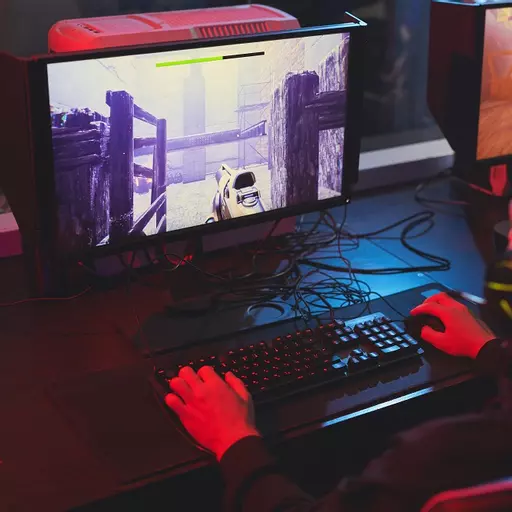Nvidia’s Ampere generation of RTX 3000 graphics cards is one of the most exciting in many years, making enormous leaps in general computing, ray tracing, and AI performance. They leapfrog even the most powerful of GPUs from the previous Turing generation and have the potential to give every gamer a dose of upgrade envy.
If you want a graphics card for high-FPS 4K or even 8K gaming, Nvidia’s new RTX 3070, 3080, and 3090, are some of the best cards for the job. But with stark differences in performance, capability, and price, picking the right RTX 3000 GPU for your next gaming PC upgrade is important.
Here’s how these three super-powered graphics cards compare, so you can make the right choice for you.
By The Numbers
All three of the RTX 3000 series graphics cards are supremely powerful and offer some of the most impressive raw computer performance in games that we’ve ever seen. The only other graphics card that can even hope to keep pace with the most affordable of them, is the RTX 2080 Ti, but even that card falls far behind the others.
The specifications of these new cards alone paint a picture of just how much more capable they are than their predecessors.
| RTX 3070 | RTX 3080 | RTX 3090 | |
| GPU | GA104-300 | GA102-200 | GA102-300 |
| Transistors | 17.4 billion | 28.3 billion | 28.3 billion |
| CUDA cores | 5888 | 8704 | 10496 |
| RT cores (second generation) | 46 | 68 | 82 |
| Tensor cores (third generation) | 184 | 272 | 328 |
| Base clock | 1500MHz | 1440MHz | 1395MHz |
| Boost clock | 1725MHz | 1710MHz | 1695MHz |
| Memory | 8GB GDDR6 | 10GB GDDR6X | 24GB GDDR6X |
| Memory speed | 14 Gbps | 19 Gbps | 19.5 Gbps |
| Memory bus | 256-bit | 320-bit | 384-bit |
| Memory bandwidth | 448 GBps | 760 GBps | 936 GBps |
| TDP | 220W | 320W | 350W |
How Is It So Powerful?
Compared To Other Generations
One of the reasons that the RTX 3000 generation is so much more powerful than everything that came before is the process node shrink.
Where the RTX 2000 Turing generation used a 12nm TSMC FinFET process, the Ampere RTX 3000 series is based on Samsung’s 8nm node instead. That makes it a much denser GPU, more than doubling the transistor count for comparable cards, intergenerationally.
CUDA core counts are also far greater this generation and account for the greatest difference in performance between RTX 3000 series GPUs too. It’s not quite as clear cut as the specifications table might suggest, though.
The Ampere generation of GPUs designates CUDA cores in quite a different fashion to previous generations of Nvidia graphics cards. Traditionally, Nvidia GPUs incorporate two types of CUDA cores. Some that handle Floating Point (FP32) calculations based on a range of numbers, and some that handle Integer (INT32) calculations on whole numbers.
The RTX 3000 series instead, has dedicated FP32 cores but also cores that could handle both FP32 and INT32 calculations alternatively, as needed.
The performance benefit of that is very much dependent on the workload being managed, with FP32 heavy jobs leading to a much greater boost in performance. As far as the spec sheet goes though, Nvidia now lists all of these cores as CUDA cores.
By more traditional metrics, the RTX 3070 would have 2,944 FP32 CUDA cores, and another 2,944 INT32/FP32 CUDA cores. That’s important to remember when comparing these cards with older generations that didn’t note the INT32 cores in the same way.

Intragenerational Comparisons
For intragenerational RTX 3000-series comparisons though, it’s much more clear cut.
The RTX 3080 has just under 48% more CUDA cores than the RTX 3070, and the RTX 3090 a further 21%. Although clock speeds do lower slightly the higher you go, that differentiator leads to a big jump in performance between these cards in specific workloads.
RT core and Tensor core numbers make great strides as you move up the ranks of this GPU generation too. These are second and third-generation technologies, respectively, and are far more capable than anything that Nvidia has included in its commercial graphics cards before. That makes them excellent for workstation and AI tasks, as well as ray tracing and DLSS for gaming.
Memory configurations are also very different in these cards. The RTX 3070 has a traditional configuration, with 8GB of fast GDDR6 over a 256-bit bus. Its performance is great, but it falls far behind the 3080. That card makes use of 10GB of Nvidia’s new GDDR6X memory for a huge increase in bandwidth. That is again easily eclipsed by the RTX 3090, which has 24GB of even faster memory chips.
TDP does rise along with the specifications, with the RTX 3090 demanding a toasty 350W of power and cooling potential. That’s why all RTX 3000-series gaming PCs must be built with a strong power supply and cooling solution included.
Gaming performance – Just How Powerful Are These Cards?
Specification tables can only tell you so much about how capable a graphics card is. Synthetic benchmarks and real-world gaming results give a much more detailed picture – especially when the results are captured by a wide range of third-party testers, reviewers, and users. The results from these cards are clear: these are the most powerful graphics cards Nvidia has ever made.
RTX 3070
The RTX 3070 is very close in performance to the RTX 2080 Ti – the last generation flagship. That means it’s capable of close to 60 FPS at 4K in most modern AAA games and especially so when DLSS is an option. Ray tracing can lower that in some specific games like Control, but the 3070 is a very capable 4K gaming card.
Alternatively, playing at 1440p can mean much higher frame rates, letting gamers with high refresh rate monitors make the most of their fast refresh rates for smoother gameplay.

RTX 3080
Where the RTX 3070 trades blows with the 2080 Ti in some games, massively bringing down the price for a solid 4K gaming card, the RTX 3080 is next-generation in almost every way.
Its raw gaming performance is between 30 and 50% greater than the RTX 3070, guaranteeing anywhere between 60 and 120 FPS in almost all games at 4K resolution with all settings at their highest. Crucially, its added grunt brings up the 1% lowest frame rates considerably, helping to eliminate any micro stuttering that you might see with weaker graphics cards.
From Assassin’s Creed Odyssey to The Witcher III: Wild Hunt, to Borderlands 3, the RTX 3080 is an enormous upgrade over everything that came before it. In some scenarios, it’s over 80% faster than its last-generation counterpart, the RTX 2080 Super, and it easily eclipses the RTX 2080 Ti in every game you throw at it. It does the same to the RTX 3070 too.
The RTX 3080 represents the pinnacle of mainstream gaming performance in 2020. It does face stiff competition from AMD’s RDNA2 graphics cards, but for those who want to also take advantage of the additional Nvidia features, like Ansel screenshot recording, DLSS, G-Sync, and great streaming support, the RTX 3080 is at the top of the list for high-end gaming performance.
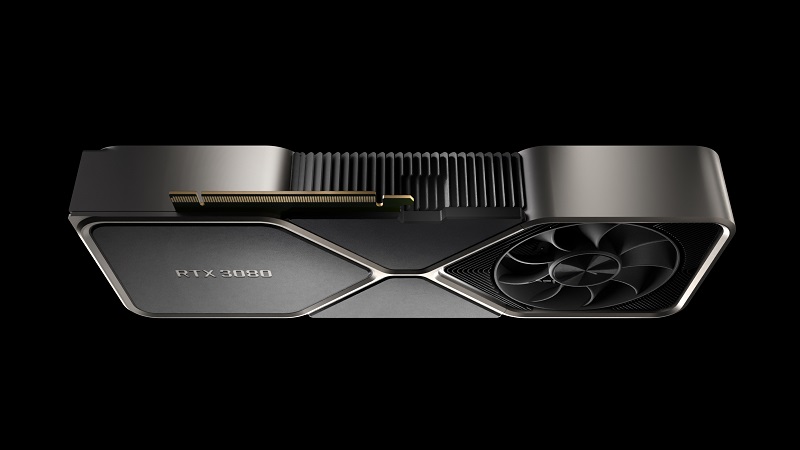
RTX 3090
But it’s not the king of the hill. Not quite. Its bigger brother, the RTX 3090 takes everything that’s great about the RTX 3080 and puts it into overdrive.
It has over 20% more CUDA cores while maintaining comparable clock speeds, increases the memory speed by a further half a gigabit per second, and widens the memory bus. Most importantly, it increases the available memory from 10GB of GDDR6, to 24GB. That gives it the ability to handle higher resolution textures at 4K, as well as enhanced image features in upcoming games.
It can also do something no gaming graphics card has done before: play at 8K resolution.
Although 8K TVs and monitors are rare, they are becoming more affordable all the time. Until now, there were no options for playing at such gargantuan resolutions, but the RTX 3090 makes it possible in a number of games, including Wolfenstein: Youngblood and Doom: Eternal. DLSS 2.0 goes a lot way to improving frame rates at this resolution, even if it’s not always necessary, but there are no ifs or buts about it. The RTX 3090 is the first 8K capable graphics card the world has ever seen.
By the numbers, it’s between 10 and 20 percent faster than the RTX 3080 in GPU-bound games at 4K resolution too, enabling over 100 FPS in even taxing AAA titles in some cases.
The RTX 3090 is an expensive card, but that’s always the case with the most powerful hardware. And that’s exactly what the RTX 3090 is. The most powerful graphics card in the world.
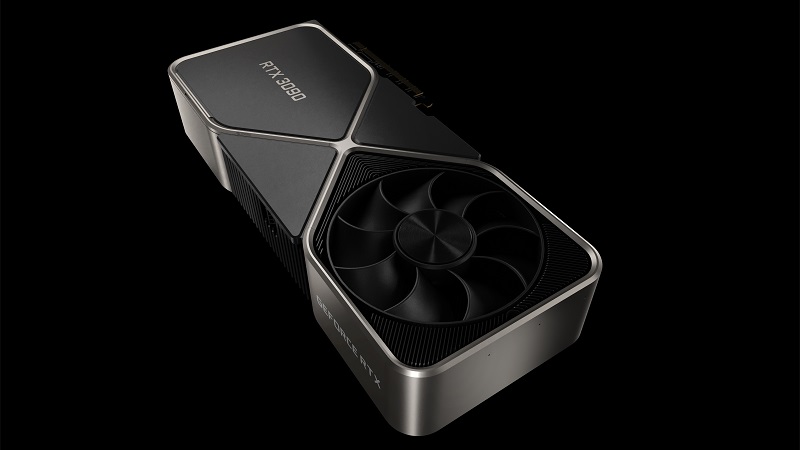
Ray-Tracing Performance
All of the new RTX 3000 series graphics cards come with second-generation RT cores, which offer a massive 2.7x improvement in ray tracing performance over the first-gen RT cores in the RTX 2000 series.
That means that even cards like the RTX 3070, which have a comparatively low number of RT cores, offer ray tracing performance in excess of what the previously top-tier card, the RTX 2080 Ti, could offer.
The RTX 3080 goes significantly further, with almost 50% more RT cores and greatly improved ray tracing performance because of it. This is especially noticeable at 4K resolution, where the RTX 3080 already holds a noticeable performance advantage.
The leap for the RTX 3090 isn’t quite as dramatic, with 20% more RT cores than the RTX 3080. It is still more powerful though, and in scenarios that really stress the GPU, like Minecraft at 4K resolution with all RTX features enabled, the RTX 3090 delivers much smoother, more playable frame rates than the RTX 3080.
In games that support it, DLSS can really level the playing field, making games more playable on the RTX 3070 and 3080 with ray tracing enabled, but there’s no doubt that the higher end cards offer a consistently more capable 4K, ray tracing experience.
They’re Good For Work And Play
All of the raw power of this generation of graphics cards doesn’t just make the RTX 3000 great for gaming; they’re also great for intensive rendering and 3D work too. If you do work in Blender, OctaneRender, or VRAY, the RTX 3000-series offers a massive performance improvement over even workstation-focused graphics cards like the Titan RTX, which cost thousands of pounds all by themselves.
The RTX 3070, 3080, and 3090 all blow it out of the water in most tasks – though some specific tasks, like CAD work, can really benefit from the workstation focus of the Titan range of graphics cards.
If you want a GPU exclusively for professional work, it’s important to check specific performance for your work applications with these cards. If you want to work and play on the same PC though, the RTX 3070, 3080, and 3090 are fantastic cards for just about everything.
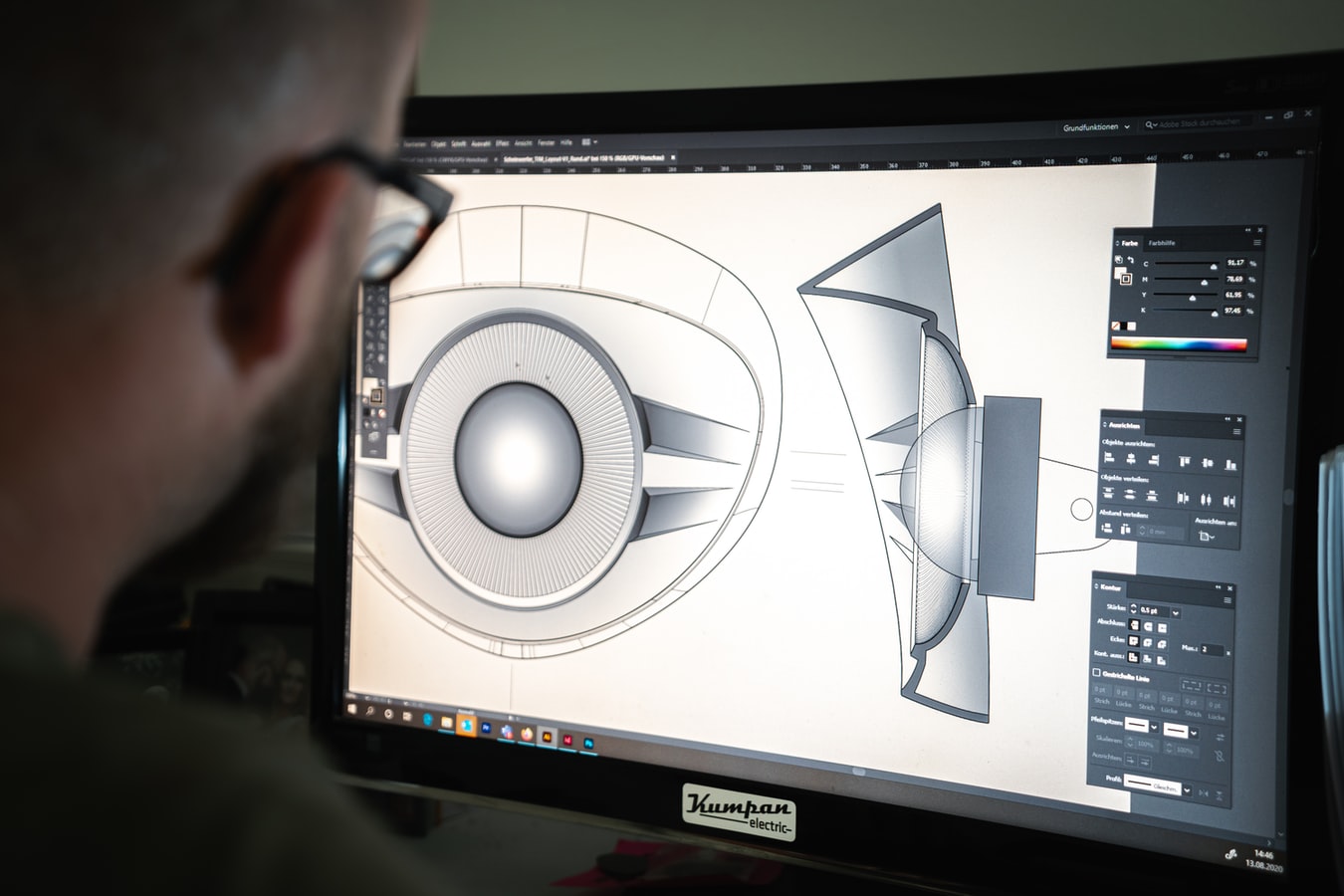
Cooling, Power and Size Demands
Just one look at the new range of RTX 3000 graphics cards and you can easily tell that these are something quite different from the norm. They feature a brand new cooler design from anything Nvidia has released in the past. That’s especially true in the higher-end 3080 and 3090 because their coolers also make them much bigger than even the biggest cards of yesteryear.
The reason for all of this is the new and rather extreme power demands of the RTX 3000 cards.
The 3070
The 3070, at 220W, is the baby of the bunch, but even that isn’t far behind the power and thermal demands of the RTX 2080 Ti – a previous flagship card. To handle all of that heat, the RTX 3070 features a dual-fan design along with a large black-finned heatsink for excellent heat dispersion. This results in a card that stays relatively quiet whether at idle or full load during intense games and temperatures stay within reasonable limits – providing you have good system airflow.
If you’re looking for a new gaming PC, all Chillblast gaming PCs boast excellent case airflow, whether they come equipped with an RTX 3070 or not.
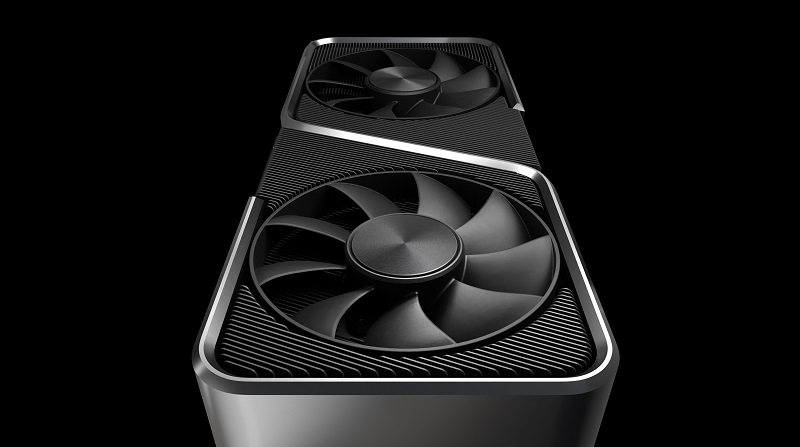
The 3080
Things get a little more interesting with the RTX 3080, however, as it’s much larger than the RTX 3070, measuring four centimetres longer. That makes it noticeably larger than almost any other graphics card too, so fitting this card into some M-ATX cases may be difficult. The Founders Edition still has a dual-slot cooler, but the design is drastically different from traditional GPUs’ heatsink fan combinations.
It utilizes a push-pull, design, with the rear-most fan pulling cold air from under the card and across the interior heatsink, whilst the fan at the opposite end pushes the then warm air out the back, or if traditionally mounted, the top of the card. This is an effective cooling solution and leads to impressively modest temperatures. If you run the card hard for a long time, noise levels can increase, but they’re still an improvement over older generation Nvidia reference cards.
Third party alternatives with triple fan cooling solutions and larger heatsinks can offer better performance, but it’s not always guaranteed.
In either case, a powerful cooling solution is required, as the RTX 3080 demands as much as 320W of power and cooling potential. That’s why a 750W PSU is recommended at a minimum for any build using an RTX 3080.

The 3090
If you want the ultimate RTX 3090 performance though, you’ll need to factor in higher power and thermal demands at 350W, and an even bigger case too. It’s almost three centimetres longer than the already huge 3080, and it’s taller and wider as well. It uses the same push-pull cooler design of the 3080, but this is a triple-slot card, so you’ll need plenty of space to make it fit.
All three of the reference model RTX 3000 cards make use of a new, 12-pin power cable, which requires adapters to attach to. The central placement of the connector makes cable management a little harder with Nvidia’s Founders Edition cards. Third-party alternatives use more traditional 8-pin connectors in more typical mounting positions, making them better suited to neat and tidy systems.
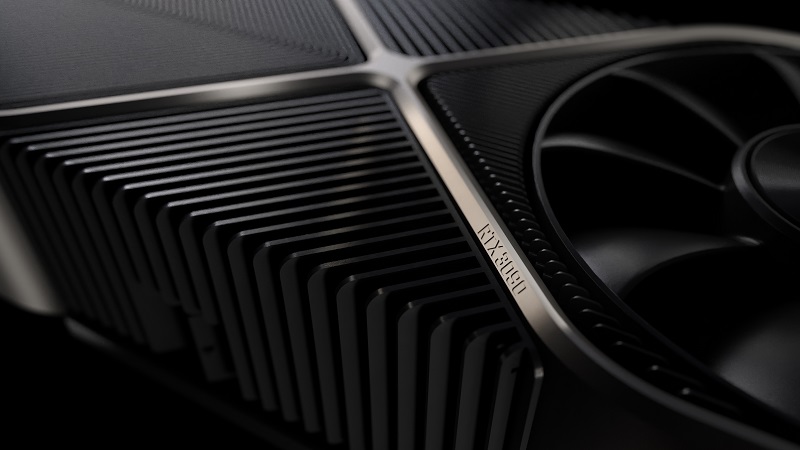
RTX 3070 vs. 3080 vs. 3090, which one is for you?
Picking a graphics card is a personal choice, with many factors to consider. If raw power is all you’re after, and you want to work with your new GPU as well as play, the RTX 3090 is the clear pick.
If you want to save some money or don’t want to game at 8K, though, the 3080 is a more affordable solution that isn’t far behind in performance. That card offers true next-gen power and benefits from the unique cooling design Nvidia has clearly put a lot of work into.
The RTX 3070 is a great card too, but it’s not in the same ballpark. With 8GB of RAM and 2080 Ti-like performance, it leans more in the direction of being the best 1440p card in the world. It can certainly handle 4K, but it’s more suited to intense, high-FPS play where that’s more important than turning up all the detail settings.
It’s also the most affordable, though, and with cutting edge ray tracing and DLSS performance, if that’s what fits your budget, it’s a far better buy than last-gen alternatives.
If you want any more advice in picking the right Nvidia RTX 3000-series GPU for you, give Chillblast a call. One of our experienced system builders will talk you through everything you need to know to make the most of your next graphics card upgrade.


